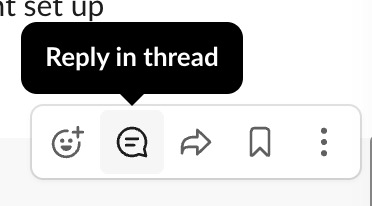The Unofficial Slack Getting Started Guide from a Tech CEO
Abonnez-vous à la newsletter
Welcome to the comprehensive guide on getting started with Slack! These best practices are brought to you by Alex Grande, CEO of Recognize. We provide an employee recognition, staff rewards, and survey system for Slack and Microsoft 365.
In Recognize, give recognition based on core competencies that can be used to redeem Amazon items or gift cards. Get started first with non-monetary peer recognition. Send within Slack.
Now onto the article about getting started with Slack. First of all, what they don’t tell you is Slack can be your best friend and be your worst enemy if neglected. If you aren’t proactively checking different parts of Slack, you will hear about it from your teammates. They won’t be happy with you. This guide is to make sure everything is chill and your coworkers aren’t upset with you.
What is Slack?
A multi-channel chat room for work. Slack’s advantage is the ease of use and the integrations. Slack can tie your different business tools into Slack, such as employee recognition.

Pitfalls of Slack
Accept right now that you won’t read everything in Slack. There is just too much going on with the groups and threads. Focus on the important things, such as when you are tagged, mentioned, or responses to your posts. Check your notifications so you aren’t notified of everything that is happening.

Join Your Workplace
First of all, when you open Slack for the first time, you will need to create or join a workspace. A workspace is where you and your team will communicate. It’s advisable to familiarize yourself with the user interface. Explore the sidebar, where you can access channels, direct messages, and Slack apps. The cool thing about Slack is that you can be part of different Workplaces and each Workplace can have people from different organizations.
Join Channels
After setting up your workspace, the next important step is to join channels. Channels are where most of your team’s conversations will happen. They can be organized by team, project, office location, or anything else that is pertinent to your organization. Most of the time you are already invited to channels.

Review Your Slack Profile & Check Your Settings
Once you’ve joined channels, it’s beneficial to set up your profile. Add your name, role, and contact information so your team can learn more about you. More importantly is the settings. These should be checked again in the future, especially if your company or role changes. For instance, when you are small or maybe need to be checking each channel, keep the Home to show unreads. If you are very busy or the teams have group in size, cut out the noise and only show Mentions.
Find it by right clicking on your photo (bottom left).

What Should You Do on the Daily with Slack
Daily, you should check your channels and direct messages for any updates. You can also use Slack to share files and messages with your team. You can use the search feature to find specific pieces of information. Check the Threads and unread in the top left. You won’t miss anything if you go through these two. It is a best practice to respond to direct messages within a working day otherwise people will feel ignored.

Threads
Every post can have a sub-conversation, called a thread. If you don’t check your threads on the daily basis, you will miss out on conversations and people will often eventually get upset with you. Threads is absolutely necessary.

Unread Messages
The tab that says “Unread” in the top left. This is less as important as threads and it can be overwhelming depending on your Slack Workplace size.
Uses of Slack Other than for Work
Slack is great for work but it is also great for communities. It’s like WhatsApp groups but with so much more flexibility. WhatsApp groups is just one thread one group. This makes it so you don’t miss anything but that means it is a firehose of content. Slack allows of threads and groups, which makes organization way better. So if you are part of a community little league, neighborhood watch, or a product community, Slack is a great solution.
Organizing Your Channels
Never settle for how things are set up now. Keep adjusting the channels to allow for higher visibility of important content. At Recognize, we have a Watercooler channel and an Announcement channel. Watercooler can be anything anyone wants to share. As you get bigger as a company, Watercooler becomes Dogs, Cats, Kids, etc specific channels. When you are really early, you can just have “General”. So each company size needs different levels of organization and this should continue to be reevaluated.
Summing it Up
Slack works by providing a platform that supports both direct messaging and channel-based communication. It integrates with a multitude of other tools and services, making it a versatile hub for team collaboration.
People love Slack because it simplifies communication. It’s designed to support the way people naturally work together, so you can collaborate with people online as efficiently as you do face-to-face.
As for settings, you should know about notification settings. You can customize these settings so that you’re only notified about what’s most important to you. You can also customize your theme, manage your profile, and set your status.
Remember, this is only a preliminary guide and there’s a lot more to explore in Slack. Good luck!